- Mass Spectrometry for Energy Transformation and Astrochemistry
- Extreme Ultraviolet Electronic Structure Characterization and Lithography
- Electronic Structure Characterization for Operando Micro/Nano Devices
- High-sensitive, Space-Resolved and Time-Resolved Electron Spin Dynamics
- In-situ/Operando Soft X-ray Spectroscopy and Scattering
- Soft X-ray Ptychographic Nanoscopy
- Resonant Coherent Scattering
- High Throughput In-situ/Operando Tender X-ray Spectroscopy
- Tender X-ray Spectromicroscopy and Ptychography
- Test Beamline
Experimental Technique
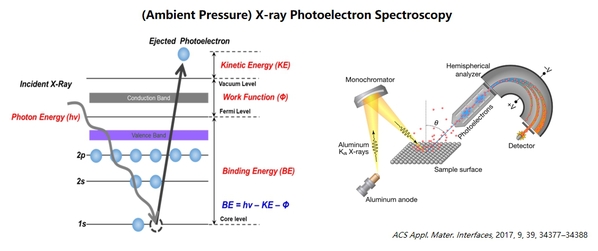
High flux tender in-situ/operando X-ray spectroscopy beamline specializes in (ambient pressure) X-ray photoelectron spectroscopy (XPS/APXPS) and X-ray absorption/Emission spectroscopy (XAS/XES). Specifically designed with a tender X-ray energy range and a milli- to the micro-scale beam spot, this beamline focuses on in-situ/operando characterization of dynamic interfaces under real working conditions in batteries, catalysis, chips, and other devices.
Experimental Technique

Beamline optics

The beamline is sourced by a planar hybrid in-vacuum undulator (IVU20.7) with an incident photon energy range of 770-10000 eV. A cylindrical mirror (M1) collects and focuses the divergent beam from the undulator. Considering the broad energy range, two types of monochromators are employed: a plane grating monochromator (PGM) and a double-crystal monochromator (DCM). The PGM consists of a plane mirror (M2) and a variable line spacing (VLS) grating, while the DCM is equipped with Si(111) and Si(220) crystals. The monochromatized X-ray beam is then focused onto the exit slit by a toroidal mirror (M3). The X-ray beam is subsequently refocused to a sub-micrometer spot size by a set of Kirkpatrick–Baez (KB) mirrors to meet the small-spot requirements of the HOPE endstation. Alternatively, the beam can be shaped into a millimeter-scale spot for the HOPE endstation using toroidal mirrors (M3/M4) in combination with a cylindrical mirror (HFM). In addition, the X-rays are also focused by M3 and M4 onto the TEA and IDEA experimental stations, respectively.
Experimental Endstation
The BL08 beamline has three experimental endstations—HOPE, TEA, and IDEA—capable of performing X-ray spectroscopies including HAXPES, APXPS, XAS, and XES. On this basis, a variety of in situ/operando characterizations can also be carried out, meeting the research needs across multiple fields.

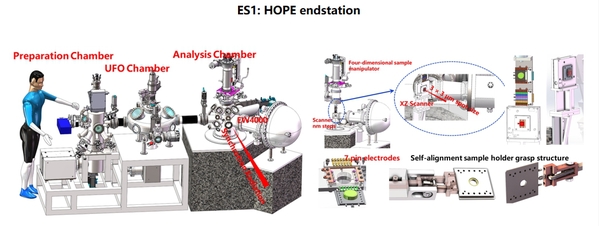

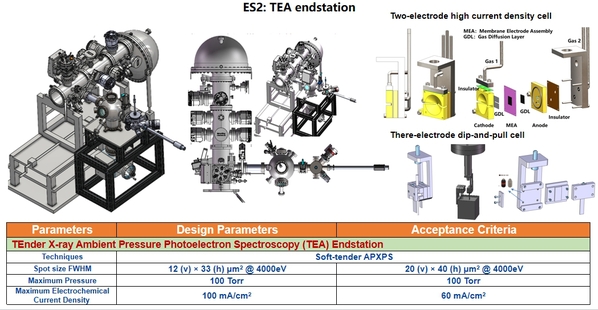
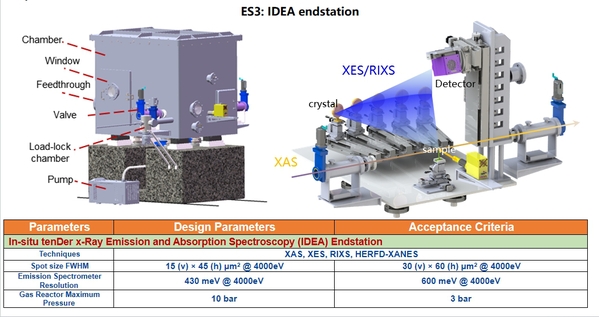
Science
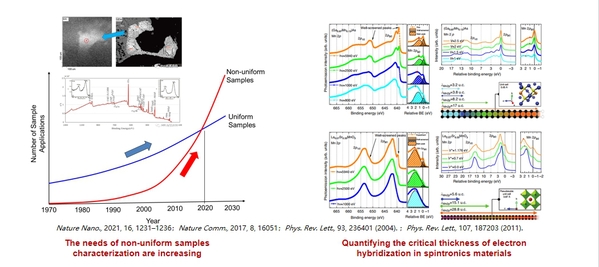
A mm-scale large beam spot combined with XPS enables rapid quality screening of non-uniform samples, meeting the characterization needs of the semiconductor field. In addition, for research systems such as quantum materials, it allows probing of electronic hybridization behaviors across surface-subsurface-bulk regions.

Non-metallic elements like P, S, Cl, and K: Life substance, macromolecule, geochemical cycle
Na, Mg, Al, Si, Ca: Optoelectronic devices, minerals, and ceramic metallurgy
Transition metals like Ti, Cu, Ni, Ru, Rh, and Pd: Catalytic materials, energy storage materials.
Rare earth elements, La series and Ac series: Magnetic materials, high entropy materials
Radioactive elements like U, Th, and Ra: Important materials in military and national defense.
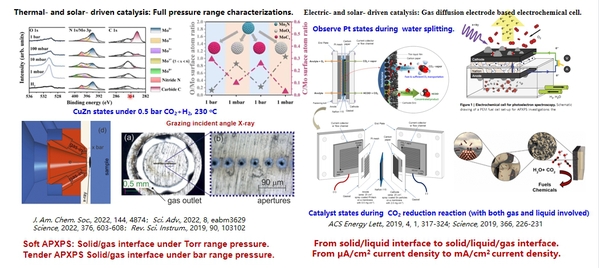
Tender APXPS enables the probing of solid–gas, solid–liquid, and solid–liquid–gas three phase interfaces. For solid–gas systems, the TEA endstation allows in situ measurements under high-pressure conditions up to 100 mbar and even 1 bar. For complex solid–liquid interfaces in electrochemical systems, the TEA supports in situ/operando studies of solid–liquid and solid–liquid–gas interfaces under applied electric fields, effectively filling a critical gap in the field of electrochemical research.
People

Useful Link
Related beamlines:
Beamlines:
http://e-ssrf.sari.ac.cn/beamlines_2024/sr_72267/beamline_maps/bl09u/xzjs/
https://photon-science.desy.de/facilities/petra_iii/beamlines/p04_xuv_beamline/index_eng.html
XPS beamlines:
https://als.lbl.gov/beamlines/9-3-1/
https://als.lbl.gov/beamlines/11-0-1-1/
https://als.lbl.gov/beamlines/9-3-2/#SoftX-rayAPXPS
https://www.diamond.ac.uk/Instruments/Structures-and-Surfaces/B07.html
http://e-ssrf.sari.ac.cn/beamlines_2024/sr_72267/beamline_maps/bl02b/xzjs/
https://www.synchrotron-soleil.fr/en/beamlines

